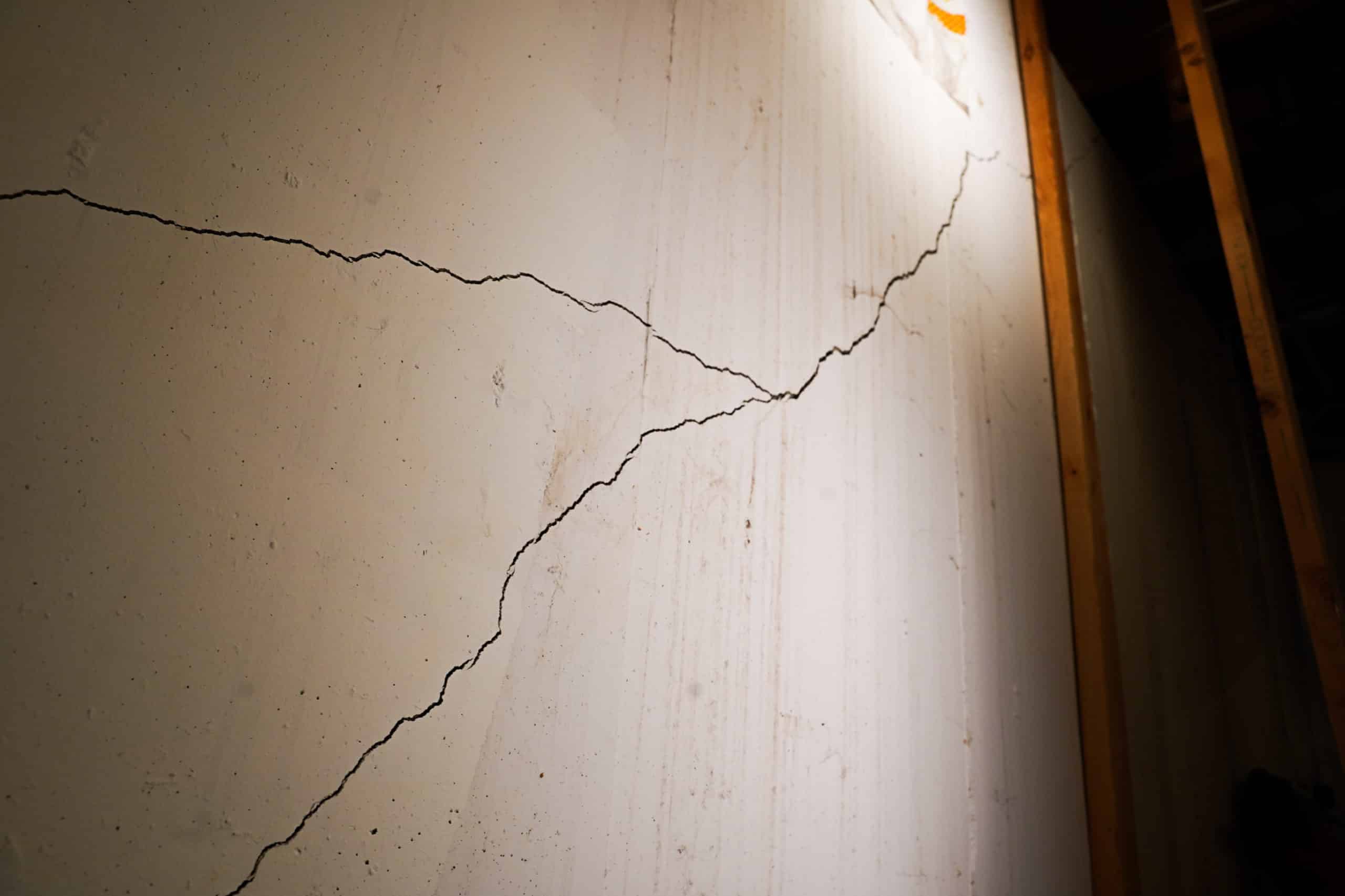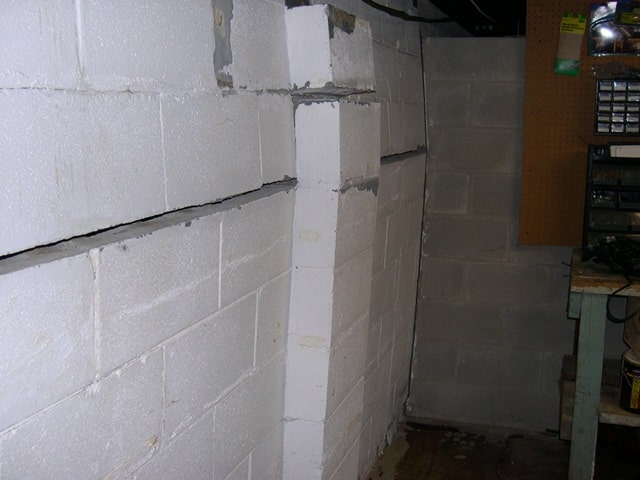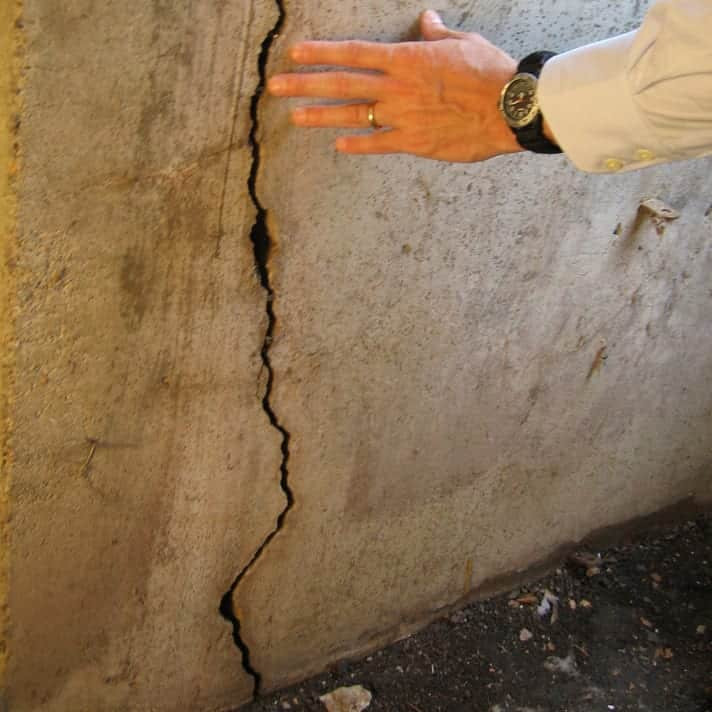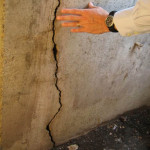You’re probably aware that your property’s foundation plays a crucial role in maintaining the stability of the structure, but do you know how to spot hidden problems that could jeopardize its integrity? Advanced tools and techniques can help detect issues that aren’t always visible at first glance. They help in evaluating the severity of the damage and selecting an effective repair solution. But what are these tools and techniques? And how can you, as a property owner, employ them to safeguard your investment? We’ll be exploring these questions in the ensuing discussion.
Understanding Foundation Problems

Soil conditions play a pivotal role in the health of your foundation. When you’re dealing with expansive clay soils that swell with moisture and shrink during dry spells, you’re likely to encounter foundation issues. These shifting soils can exert pressure on your home’s foundation, creating cracks and other structural problems.
It’s not just the type of soil that can affect your foundation either; it’s also the way it’s packed. Poorly compacted soil can cause your foundation to settle unevenly, leading to instability.
Furthermore, poor drainage can exacerbate these problems, causing water to pool around your foundation and hasten its deterioration.
Common Signs of Foundation Issues
Spotting the telltale signs of foundation issues early on can save you from a home-improvement nightmare down the line. Noticeable symptoms are often visible in your home’s interior. Cracked walls and uneven floors are common indicators of structural instability. Sagging ceilings, too, can signal foundation concerns.
Another warning sign is moisture intrusion, which often leads to basement flooding. Not only does this create a damp, unpleasant environment, but it can also lead to shifting soil beneath your home, exacerbating foundation problems.
Plumbing leaks are another potential sign, contributing to excessive moisture and promoting pest infestations. These pests, particularly termites, can cause additional damage that further destabilizes your foundation.
Other exterior signs include settlement cracks in your home’s exterior walls or foundation itself. These are often the result of the shifting soil mentioned earlier.
Recognizing these signs of foundation issues is the first step in preventing significant damage. Addressing these problems quickly can help you avoid costly repairs down the road.
Stay vigilant and proactive in your home maintenance to ensure your foundation remains strong and secure.
Tools for Detecting Foundation Damage
In spotting these signs of foundation issues, the right tools can make all the difference. It’s not just about having eyes on the ground, you’ll need foundation inspection tools. These range from structural assessment equipment to moisture detection devices.
You can use leveling measurement instruments to check if your floors and walls are even and straight. If you suspect your property’s soil might be the culprit, soil testing kits come in handy. These kits can analyze the composition and load-bearing capacity of your soil.
Infrared thermography applications provide another level of detection, giving you the ability to spot temperature differences in your foundation that can indicate damage. For those hard-to-see areas, crack monitoring systems and ground penetrating radar can be a real game-changer.
The former tracks the progress of visible cracks over time, while the latter gives you an almost X-ray-like view of what’s happening beneath your property. These tools are vital in detecting and assessing the extent of damage in your foundation.
With them, you’re armed and ready to tackle any foundation issue that comes your way.
Professional Inspection Methods
Now that you’re aware of the tools for detecting foundation damage, let’s move on to professional inspection methods.
These methods not only help in identifying hidden foundation flaws, but also in repairing the underlying issues.
Trust me, understanding these techniques can be a game-changer when dealing with foundation problems.
Detecting Foundation Flaws
Uncovering foundation flaws might seem daunting, but with professional inspection methods, you can find even the most concealed issues.
The key to detecting foundation problems is understanding what affects foundation stability. The foundation of your home is greatly influenced by soil conditions. When the soil around your home expands and contracts, it can lead to movement and possible damage.
Regularly inspecting your home for signs of foundation issues is essential. Here are some things you should look out for:
- Cracks in walls and floors
- Doors and windows that stick or don’t open properly
- Uneven or sloping floors
These are all signs of possible issues with your foundation. A professional can also use specialized equipment to detect hidden problems and assess the stability of your foundation. This can include ground-penetrating radar and hydraulic jacks.
Repairing Underlying Issues
Detecting foundation flaws is just the first step in maintaining a sturdy home. After identification, it’s time to address the underlying causes and initiate repair strategies to ensure the longevity of your structure.
Foundation issues can stem from various problems: soil instability, inadequate drainage, or poor construction practices. You’ve got to understand these underlying causes first. It’s not enough to fix the visible damage; you’ve got to attack the root of the problem. This is where professional inspection methods come into play.
Professional inspectors are equipped with the necessary tools and expertise to diagnose these hidden issues accurately. They’ll analyze the structure, soil, and drainage system to identify what’s causing your foundation troubles.
Once they’ve pinpointed the root cause, they’ll devise a targeted repair strategy. These repair strategies may involve underpinning to stabilize the soil, installing drainages to control moisture levels, or reinforcing the foundation with piers or beams.
It’s important to remember that every situation is unique, so the repair strategy will depend on the specifics of your problem.
In essence, repairing underlying issues is a systematic process. It’s about digging deep, understanding the cause, and implementing the right solutions. This way, you can ensure your home stands strong for years to come.
DIY Detection Techniques
Without the need for professional help, you can uncover hidden foundation problems in your home by using various DIY detection techniques.
Don’t fall for foundation myths that suggest these issues are always visible or easy to spot. Hidden causes often lurk beneath the surface, impacting the structural integrity of your home.
By using a variety of DIY tools, you can perform your foundation inspections. These might include:
- A level to check for uneven floors or walls.
- A tape measure to identify any changes in the size of doors or windows.
- A flashlight to illuminate dark corners and spot potential moisture issues.
These tools can help you identify possible problems related to soil conditions or moisture issues, both of which can severely damage your home’s foundation.
Remember, you’re not looking for aesthetic issues but rather signs that the foundation might be compromised.
Once you’ve identified potential problems, you’ll need to consider your options for repair materials. This process is critical, as the wrong materials can exacerbate the problem rather than solve it.
Evaluating the Severity of Damage
Having identified potential foundation problems using your DIY techniques, it’s time to assess how serious these issues are. Damage assessment is critical in this phase, as it lets you know the extent of the damage and helps you plan for the right repair solution.
First off, inspect the visible damage. Look for cracks, bulges, or shifts in your foundation. These severity indicators give you a hint about the level of damage. Hairline cracks may not be as severe as larger, wider cracks that are an inch or more.
Similarly, a slight bulge may not be as concerning as a significant shift in your foundation.
Next, consider the frequency and recurrence of the problem. Is it a one-off incident, or does it keep happening? Recurring issues often indicate more severe damage.
Remember, the severity of damage isn’t just about the physical signs. It also encompasses the impact on the property’s structural integrity. Are doors sticking? Are floors uneven? These are signs that the foundation’s stability is compromised.
In the end, a careful and thorough damage assessment helps you understand the severity of your foundation problems, preparing you for the next step: choosing the right repair solution.
Choosing the Right Repair Solution
Now that you’ve assessed the damage, it’s time to pick the best repair solution.
You need to consider which methods are suitable, how cost-effective these options are, and their expected longevity.
It’s not just about fixing the problem, it’s about ensuring it doesn’t come back.
Identifying Suitable Repair Methods
When it comes to addressing foundation problems, choosing the right repair solution is a task that requires careful thought.
It’s not just about the immediate fix, but how it’ll hold up over time and withstand future issues.
A crucial part of this process is understanding the available repair technology.
In the modern age, you’ve got a range of high-tech options that could provide effective and long-lasting solutions.
From carbon fiber reinforcement to hydraulic jacking, the technology is ever-evolving and improving.
Equally important is the material selection.
The material used can greatly influence the durability and efficacy of the repair.
You’ve got to consider:
- The type of soil your foundation rests on
- The construction materials originally used
- The specific damage your foundation has suffered
Each point can directly impact the type of repair material that’ll best suit your situation.
Cost-Effectiveness of Solutions
Beyond identifying the most suitable repair methods and materials for your foundation problems, you also need to consider cost-effectiveness. It’s not just about fixing the issue, but also ensuring the solution won’t break the bank.
This is where cost analysis comes into play. It’s essential to compare the prices of various repair options, considering both the upfront costs and potential long-term savings. You’ll want to choose a solution that provides the best value for your money. Remember, the cheapest option isn’t always the most cost-effective one. It’s about finding a balance between quality and affordability.
Budget planning is another crucial aspect. You need to determine how much you’re willing and able to spend on the repair work. This isn’t a time for guesswork, but rather for careful calculation.
Take into account all potential costs, including labor, materials, and any additional charges. Once you have a clear idea of your budget, it’ll be easier to select a repair solution that aligns with your financial capabilities.
Longevity of Repair Options
Choosing the right repair solution isn’t just about immediate results; it’s equally, if not more, important to consider the longevity of these options.
You want to ensure that your repair durability can stand the test of time, providing long term effectiveness. This means considering the solution lifespan, from the material longevity to the repair sustainability.
When evaluating repair options, here are key factors to consider:
- Enduring results: You don’t want a quick fix that will crumble in a few years. Seek out lasting solutions that will provide stability for decades.
- Material longevity: The lifespan of the materials used in the repair is vital. Opt for materials known for their durability and resistance to environmental conditions.
- Maintenance longevity: Consider how long the repair will last before needing maintenance. The best solutions require minimal maintenance while still maintaining their effectiveness.
Expert Foundation Repair Techniques
In the realm of foundation repair, experts employ a variety of sophisticated techniques to rectify hidden problems.
These advanced techniques, often involving repair innovations, ensure your home’s foundation is sturdy and safe.
One popular method is slabjacking. Here, a mixture of cement, sand, and ash is injected beneath your foundation, lifting it back to its correct position.
It’s a quick fix that doesn’t require you to vacate your home.
Another technique commonly used is piering. This method involves driving steel posts into unstable soil to support the foundation.
It’s a bit more invasive, but if your foundation is sagging due to soil issues, it’s the best solution.
Hydraulic jacking, also known as “house raising,” is another advanced technique.
It involves lifting the entire house off its foundation and building a new one underneath.
It’s a drastic measure, but it’s sometimes needed when the foundation is severely compromised.
Maintenance Tips to Prevent Future Damage

Routine inspections are key to maintaining foundation health. By regularly checking for signs of damage, you can spot minor issues before they turn into major problems. During these inspections, pay attention to cracks, moisture levels, and any signs of instability.
Soil management is another crucial aspect. The soil around your home greatly affects your foundation’s stability, so it’s important to maintain proper soil moisture levels. Too much or too little moisture can lead to foundation problems.
Implement the following tips to keep your foundation in top shape:
- Seasonal checks: Changes in weather can affect your foundation. Regularly inspect your home during different seasons to catch any potential issues.
- Landscaping adjustments: Ensure that trees and shrubs aren’t too close to your home. Their roots can damage the foundation.
- Drainage solutions: Proper drainage is key to controlling soil moisture and preventing foundation damage.
Frequently Asked Questions
What Is the Average Cost of Repairing Foundation Problems?
Determining the average cost of repairing foundation problems isn’t straightforward.
It depends on several cost estimation factors such as the extent of damage, the foundation repair techniques used, and your home’s location.
You could be looking at anywhere from a few hundred to several thousand dollars.
It’s best to get professional inspections and quotes to understand the exact cost you’re dealing with.
How Long Does It Take to Repair a Damaged Foundation?
The duration of a foundation repair depends on several factors.
Typically, a foundation repair timeline can range from a few days to a few weeks.
The severity of the damage, the repair method chosen, and weather conditions can all impact this timeline.
It’s crucial to remember that the thoroughness of the foundation inspection also factors into this time frame.
Be patient, as rushing the process could lead to further issues down the line.
What Are the Potential Risks if Foundation Problems Are Ignored?
If you ignore foundation problems, you’re risking your home’s structural integrity.
Cracks might widen, walls may start to buckle, and before long, you could have a real disaster on your hands.
Your property value can plummet too.
It’s not a pretty picture.
So, don’t turn a blind eye to foundation issues.
Act swiftly, get them repaired, and save yourself a heap of trouble.
So, you’ve seen how we spot and fix hidden foundation issues. From leveling instruments to hydraulic jacking, we use cutting-edge tools and techniques. Don’t forget, regular inspections and maintenance are key to avoiding future problems. With professional expertise, we can ensure your building’s foundation stays in top shape. Because, in the end, it’s not just about fixing the problem—it’s about preventing it from happening again.




